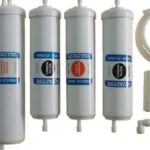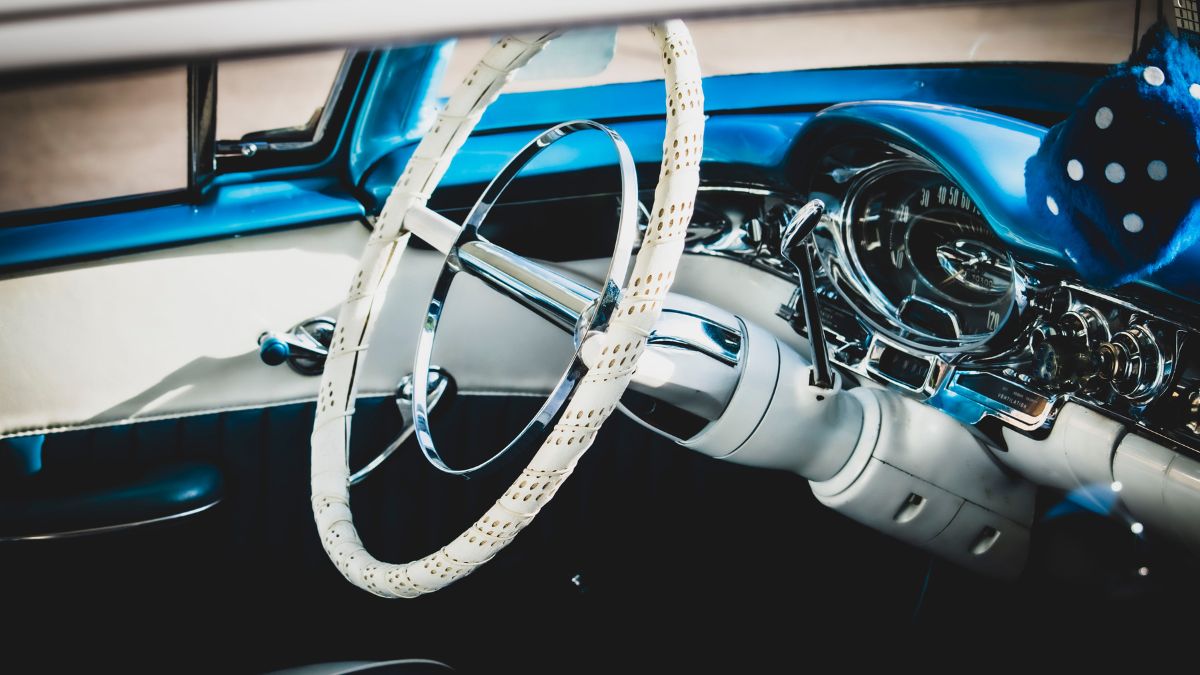The Chevrolet Corvette has long been celebrated for its performance, and the C3 Corvette, produced from 1968 to 1982, is no exception. However, like many classic cars, the C3 Corvette is not without its quirks. One issue that many owners of the C3 Corvette face is oversteer-sensitive steering, a condition that can be both challenging and dangerous if not addressed. Troubleshooting C3 Corvette oversteer-sensitive steering involves Understanding what causes oversteering and how it can be fixed.
In this guide, we’ll explore the causes, signs, and troubleshooting methods for oversteer-sensitive steering in C3 Corvettes. Whether you’re a seasoned mechanic or a Corvette enthusiast, this article will help you diagnose and fix this problem to ensure a smoother and safer ride.
Table of Contents
- Understanding Oversteer in C3 Corvettes
- Common Causes of Oversteer-Sensitive Steering
- Signs of Oversteer-Sensitive Steering in a C3 Corvette
- Troubleshooting C3 Corvette Oversteer-Sensitive Steering
- Steering Gearbox Issues
- Suspension and Alignment Problems
- Tire Condition and Pressure
- Power Steering System Problems
- Upgrades and Modifications to Improve Steering Sensitivity
- Preventive Maintenance Tips
- Conclusion
- FAQs
1. Understanding Oversteer in C3 Corvettes
Before diving into troubleshooting, it’s essential to understand what oversteer is, especially as it relates to the C3 Corvette. Oversteer refers to a situation where the rear wheels of the car lose traction and slide outward while turning, making the car feel like it is turning too much. This is in contrast to understeer, where the car resists turning and feels like it is not turning enough.
In a performance car like the C3 Corvette, oversteering can be more pronounced due to the car’s rear-engine design and relatively high horsepower. The oversteer sensitivity of the C3 Corvette’s steering means that the car may overreact to minor inputs on the steering wheel, causing the rear end to lose traction, especially in tight corners or during aggressive driving.
2. Common Causes of Oversteer-Sensitive Steering
Oversteer-sensitive steering in a C3 Corvette can result from several underlying issues. These include both mechanical and external factors that affect the car’s handling characteristics. Here are some of the most common causes:
1. Steering Gearbox Problems
Over time, the steering gearbox in a C3 Corvette can wear out, leading to slack or inconsistent response from the steering wheel. A loose or worn gearbox can cause the car to feel unstable, especially at higher speeds or when cornering.
2. Suspension and Alignment Issues
The suspension system in a C3 Corvette plays a crucial role in managing the car’s handling characteristics. If the suspension components, such as shock absorbers, springs, or bushings, are worn or misaligned, they can exacerbate oversteer conditions. Misalignment can cause the wheels to track incorrectly, which increases sensitivity to steering inputs.
3. Tire Condition and Pressure
Tires are the primary point of contact between the car and the road. If the tires are worn unevenly or under-inflated, they can cause poor grip, leading to oversteer. Proper tire pressure and tread depth are critical for maintaining the balance of the car, especially when cornering.
4. Power Steering System Problems
A malfunctioning power steering system can affect steering sensitivity. If the power steering pump is not providing consistent hydraulic pressure, it can lead to erratic or overly responsive steering, making the car more prone to oversteering.
3. Signs of Oversteer-Sensitive Steering in a C3 Corvette
Recognizing the signs of oversteer-sensitive steering is the first step in troubleshooting the problem. Oversteer often manifests during hard cornering, but it can also occur under other conditions. Here are some key signs to watch for:
- Unpredictable Rear-End Movement: If the back end of the car seems to slip or drift out when turning, it’s a clear indicator of oversteering.
- Steering Wheel Instability: A loose or overly responsive steering wheel, especially when cornering, is a common sign that your steering system may be too sensitive.
- Difficulty Keeping the Car Straight: If you find it hard to maintain a straight line, particularly when accelerating or decelerating, it could be a result of oversteer-sensitive steering.
- Increased Tire Wear: Uneven tire wear, especially on the rear tires, may suggest that the car is oversteering and losing traction.
4. Troubleshooting C3 Corvette Oversteer-Sensitive Steering
Now that we understand the potential causes and signs of oversteer-sensitive steering, let’s discuss how to troubleshoot the issue. By focusing on key components of the steering and suspension systems, you can often pinpoint the source of the problem and take appropriate action.
1. Steering Gearbox Issues
If the steering gearbox is worn, it can cause excessive play in the steering wheel, leading to oversteer sensitivity. To troubleshoot:
- Check for Play: Jack up the front of the car and turn the steering wheel back and forth. If you notice any slack or delayed response, the gearbox may need to be replaced or repaired.
- Inspect for Leaks: Leaks in the steering box or hoses can lead to inconsistent steering. Check the system for hydraulic fluid leaks.
- Test the Steering Rack: If the car has a rack-and-pinion steering system, inspect the rack for signs of wear, such as uneven resistance or grinding noises.
2. Suspension and Alignment Problems
Improper suspension setup or misalignment can significantly affect steering sensitivity and handling. Here’s how to check for problems:
- Check Alignment: If the car pulls to one side or feels unstable, an alignment issue is likely. Have the car’s alignment checked by a professional.
- Inspect Suspension Components: Look for worn or damaged suspension components like shocks, struts, control arms, and bushings. Excessive play in any of these parts can cause instability and contribute to oversteering.
- Examine Rear Suspension: Since oversteering typically involves the rear wheels losing traction, focus on the rear suspension. Worn rear shocks or springs can cause the rear end to behave unpredictably.
3. Tire Condition and Pressure
Tires are a critical component in managing a car’s handling, and improper tire maintenance can make oversteer worse. To address this:
- Check Tire Pressure: Use a tire pressure gauge to ensure all four tires are inflated to the manufacturer’s recommended pressure. Both over-inflation and under-inflation can affect handling.
- Inspect Tread Depth: Uneven or worn-out tires should be replaced, as they can cause reduced grip and increase the likelihood of oversteering.
- Evaluate Tire Type: Ensure that all tires are of the correct type and size for your driving needs. High-performance tires can significantly improve grip and reduce oversteering.
4. Power Steering System Problems
A faulty power steering system can lead to inconsistent and overly sensitive steering, exacerbating oversteer. To troubleshoot:
- Check Fluid Levels: Ensure that the power steering fluid is at the proper level. Low fluid can cause erratic steering responses.
- Inspect the Pump: A worn or malfunctioning power steering pump can lead to a lack of consistent hydraulic pressure. Listen for whining noises when turning the wheel, which may indicate pump issues.
- Examine the Steering Column: Check the steering column for any signs of wear, especially if the steering feels unusually loose or stiff.
5. Upgrades and Modifications to Improve Steering Sensitivity
If your C3 Corvette’s steering still feels too sensitive or oversteer-prone after troubleshooting, you may want to consider some upgrades or modifications. Here are a few options to improve steering stability:
- Upgraded Suspension: Upgrading to performance suspension components, such as stiffer springs or better shocks, can help reduce oversteering by providing better control.
- Aftermarket Steering Rack: An aftermarket steering rack with a better ratio can offer more precise control over steering sensitivity.
- Performance Tires: High-performance tires with better grip can help mitigate oversteering by providing more stability during aggressive cornering.
6. Preventive Maintenance Tips
To prevent oversteer-sensitive steering issues from arising in the future, regular maintenance is key. Here are some tips:
- Perform Regular Inspections: Routinely inspect the steering, suspension, and tires for signs of wear or damage.
- Check Alignment Annually: Have your alignment checked at least once a year, especially if you drive your Corvette frequently.
- Maintain Proper Tire Pressure: Keep your tires properly inflated and check the tread regularly for signs of wear.
7. Conclusion
Troubleshooting C3 Corvette oversteer-sensitive steering involves understanding the underlying causes and identifying the key components of the car’s handling system. By diagnosing issues with the steering gearbox, suspension, tires, and power steering system, you can often resolve the problem and restore your Corvette’s performance. Regular maintenance and proactive upgrades can also help prevent oversteering from becoming a persistent issue.
By addressing oversteering early and thoroughly, you can enjoy a safer and more controlled driving experience in your C3 Corvette for many years to come.
FAQs
1. What causes oversteer in a C3 Corvette?
Oversteer in a C3 Corvette is typically caused by issues with the steering system, suspension, tire condition, or alignment.
2. How can I reduce oversteer sensitivity in my Corvette?
Upgrading suspension components, checking tire pressure, and ensuring proper alignment are key steps to reducing oversteer sensitivity.
3. Why is my C3 Corvette’s steering so sensitive?
Sensitive steering may be due to worn components, misalignment, or problems with the power steering system.
4. How can I tell if my C3 Corvette’s steering gearbox is worn?
Look for excessive play in the steering wheel or inconsistent steering response. A worn gearbox may require replacement.
5. What role do tires play in oversteer?
Tires that are improperly inflated or worn unevenly can reduce traction and increase the likelihood of oversteering.
6. Can suspension upgrades help reduce oversteer?
Yes, upgrading to performance suspension components like stiffer springs or better shocks can help reduce oversteer by improving control.











